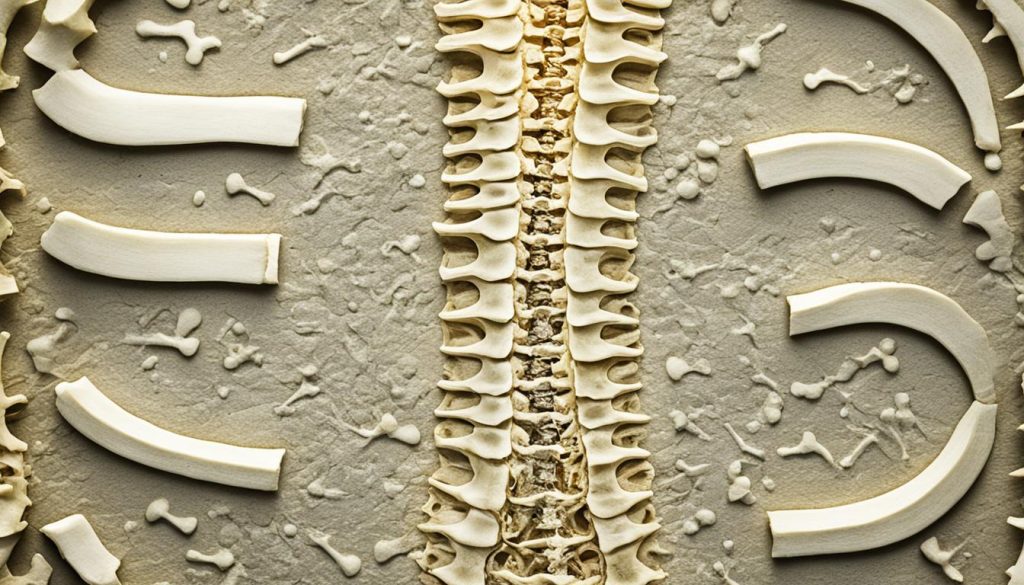Have you ever wondered why your back pain seems to linger, while others experience quick relief? Back pain is a common issue that affects many people. It ranges from dull, constant aches to sudden, severe pains. Knowing the different types of back pain can help find effective solutions.
Let’s explore these various types, from short-term episodes to long-term conditions. Understanding these patterns helps manage your pain better. It also leads to finding specific back pain relief strategies.
The American Chiropractic Association highlights how common back pain is in the U.S. The Mayo Clinic explains the difference between acute and chronic back pain. The National Institute of Neurological Disorders and Stroke offers detailed information on symptoms and causes of back pain. These resources aim to guide you through your back pain issues.
Quick Recommendation: Our blog aims to give you a clear understanding of the different types of back pain. If you want to dive into the subject of back pain more comprehensively, we recommend The Back Pain SOS - eBook.
What Are the Common Causes of Back Pain?
Knowing what causes back pain can help you prevent it. A common cause is a back injury, like straining a muscle or ligament. This can happen from lifting too much or moving suddenly.
Lifestyle factors also play a big part. Sitting or standing poorly, not moving enough, and lifting wrong can make back pain worse. Not exercising enough also adds to the problem.

Spinal degeneration is another big cause of back pain. It comes with age and conditions like arthritis or osteoporosis. Over time, spinal discs can break down, leading to pain and less flexibility. The American Academy of Orthopaedic Surgeons says degenerative disorders are a main reason for ongoing back pain.
Your job can also affect your back. Occupational hazards from hard work or sitting a lot can lead to back pain. Lifting heavy things often can increase your risk. On the other hand, sitting too much, common in office jobs, also strains the back. The Centers for Disease Control and Prevention (CDC) say work is a top cause of back pain.
Keeping your spine healthy is key to feeling good overall. Spine-health suggests small daily changes can help manage and prevent back pain. This leads to a more productive and pain-free life.
How to Identify Different Types of Back Pain
Knowing the type of back pain you have is key to getting the right treatment. Mechanical back pain usually comes after a sudden injury or strain. It happens when your musculoskeletal system is stressed, often during certain activities.
Chronic back pain can last for months or years. It can be either mechanical or neuropathic. Neuropathic pain comes from nerve damage and feels like burning or shooting sensations. Look out for tingling, numbness, and where the pain is to figure out if it’s neuropathic.

Mechanical pain gets worse with activity but feels better when you rest. It can come from things like arthritis or worn-out discs. Knowing how long you’ve had pain, where it hurts, and how it changes with activities can help tell if it’s mechanical or neuropathic.
Talking to a healthcare professional about your symptoms is crucial for a correct diagnosis. Websites like WebMD explain the differences clearly. Spine-Health goes into the diagnostic process deeply. The Global Burden of Disease Study shows why it’s important to know the type of pain for better treatment.
Symptoms Associated with Various Back Pain Types
Knowing the different back pain symptoms can help you figure out what’s causing it. For example, pain that goes down your leg might mean you have sciatica. This happens when the sciatic nerve gets pinched or irritated.

With a herniated disc, you might feel sharp pain in your lower back. This pain can spread to other areas. In bad cases, it can even cause weakness or problems with bowel or bladder control. It’s important to catch these signs early.
Spinal stenosis is another condition to watch out for. It doesn’t usually cause sharp pain like a herniated disc. Instead, it feels like dull, aching pain. You might also feel cramping or numbness in your legs.
Spinal stenosis can make moving around harder, affecting your daily life.
If you have any of these symptoms that don’t go away or get worse, see a doctor. Keeping track of your symptoms and knowing what they mean can help you find the right treatment.
Back Pain and Its Impact on Daily Life
Chronic back pain can really change your quality of life. It brings physical limitations and mental stress. The psychological effects of back pain include more stress, anxiety, and even depression. These can make you feel worse overall.
Even simple tasks like lifting groceries or sitting can become hard with back pain complications. These physical limitations can make it tough to work well. This can lower your productivity and how well you do at work.
It’s important to see that chronic back pain affects more than just you. It has big effects on society and the economy. The World Health Organization (WHO) says back pain is a top cause of disability worldwide. The American Psychological Association also points out how it can hurt your mental health.

The Journal of the American Medical Association talks about the economic effects. People with chronic back pain often miss work more. This not only hits their wallet but also the whole economy.
In short, back pain changes your life in many ways. It affects your physical limitations, psychological effects, and even your work and money.
Quick Recommendation: Our blog aims to give you a clear understanding of the different types of back pain. If you want to dive into the subject of back pain more comprehensively, we recommend The Back Pain SOS - eBook.
Effective Treatments for Different Types of Back Pain
Finding the right mix of treatments is key to managing back pain well. Physical therapy is often a top choice. Physical therapists help with exercises to strengthen muscles, increase flexibility, and lessen pain.
Along with physical therapy, the right medication for back pain is also important. Over-the-counter drugs like NSAIDs and prescription muscle relaxants can ease pain and swelling. For more severe pain, doctors might suggest stronger drugs or steroid injections for quick relief.
For those looking at alternative treatments, options like acupuncture, chiropractic care, and massage are becoming more popular. Research from places like Harvard Medical School shows these methods can help many people feel better.
It’s crucial to talk to healthcare experts to get a treatment plan that fits your needs. Mixing different approaches can help you handle your back pain better and boost your life quality. Taking steps towards back pain management can greatly improve your daily life and how well you function.

Preventative Measures to Avoid Back Pain
Preventing back pain is key to a healthy life. Staying active is a big part of it. Exercises like core strengthening and stretching can really help lower the risk of back injuries. Also, making your workspace ergonomic is important.
Good posture is crucial too. Keeping your back straight and shoulders relaxed helps a lot. The Mayo Clinic suggests safe lifting techniques to prevent back strain. Always bend at your knees, not your waist, when lifting heavy things.
Keeping a healthy weight also helps your back. The American Council on Exercise (ACE) suggests certain workouts to prevent back pain. Adding these exercises to your routine can make your spine stronger and less likely to get hurt. By taking these steps, you can improve your back health and avoid chronic pain.
When to Seek Medical Attention for Back Pain
Back pain is common, but some cases may signal a serious issue. Knowing when to see a doctor is key for your health.
If you have severe back pain that doesn’t get better with rest or lasts over a few weeks, see a doctor. Also, pain after a fall or accident means you should get medical help right away.
Be aware of red flags in back pain. Pain with fever, weight loss, or issues with bladder and bowel could mean a serious problem. The American Academy of Family Physicians says to get medical help quickly if you notice these signs.
MedlinePlus and The Spine Journal stress the need for quick action with alarming symptoms. They talk about detailed tests to find the cause. Watching for these red flags is crucial for your health.
Conclusion
Knowing about different back pain types is key to managing it well. It helps you take steps early to keep your back healthy. By focusing on what works best for you, you can make treatments more effective.
Studies from The Lancet and the Foundation for Chiropractic Progress show the value of personalized care. Learning about back pain symptoms and causes helps you get the right medical help. It also leads to healthier habits and ways to prevent pain.
Groups like BackCare push for more awareness about back health. They show how important it is to educate yourself and take care of your back. By doing so, you improve your health and life quality.
Quick Recommendation: Our blog aims to give you a clear understanding of the different types of back pain. If you want to dive into the subject of back pain more comprehensively, we recommend The Back Pain SOS - eBook.


Your point of view caught my eye and was very interesting. Thanks. I have a question for you. https://accounts.binance.info/register?ref=P9L9FQKY